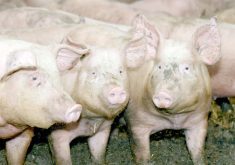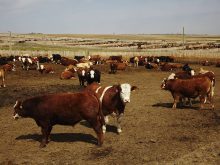NEWBROOK, Alta. – Alberta owned XL Foods sold meat into Canadian niche markets to survive while competing against multinational beef processing plants owned by Cargill and Tyson.
Now that XL Foods has bought the Tyson Foods’ slaughter plant in Brooks, Alta., making it a dominant packer in Western Canada, it plans to continue selling Canadian beef in Canada, said Lee Nilsson, co-CEO of XL Foods.
“It’s the market we know the best. The market we believe in is the Canadian market for a Canadian product,” said Nilsson.
Read Also

Lending policy still focused on primary producers: Farm Credit Canada
Farm Credit Canada said it has not changed its business practices and remains committed to supporting all producers, after a report from an Ottawa-based media outlet claimed otherwise.
“Without running anybody’s business down, that wasn’t necessarily the focus of Brooks. It was a machine. Get them in, get them out, run through as many as you can out the other end,” said Nilsson during a July 15 beef industry meeting in northern Alberta.
“In the last 10 years XL has survived by selling into the Canadian marketplace. XL wakes up in morning and says: ‘How am I going to sell more Canadian product?’ We had to find the best places to sell in Canada to stay alive,” said Nilsson.
The sale of the Brooks packing plant to XL has some producers worried a reduction in competition will mean a reduction in price but Nilsson said that won’t happen.
A wide-open American border and thousands of Canadian cattle going to American packing plants each week will ensure the company has to compete for slaughter cattle.
“To sit here and say competition is all gone, they don’t realize the biggest competition is the American market,” he said.
“There’s still all kinds of competition out there. There are five plants taking cows and bulls out there every day. As long as the border is open, the word monopoly doesn’t exist. As soon as the border closes, we all better get in a room because we’re in a wreck.”
The biggest factors affecting Canadian cattle prices are high fuel prices, high feed prices and a high Canadian dollar, he said.
The Canadian beef industry grew because of cheap feed and a low Canadian dollar. Those advantages have dwindled, forcing cattle producers, governments and industry to look for new ways to maintain a viable industry.
Cam Ostercamp of the Beef Initiative Group said programs like the Canada Gold program, designed to label superior cuts of beef with a distinctly Canadian brand, are needed.
“There was no real incentive for multinational processors to distinctly brand Canadian product. We think a Canada Gold type corporation can do a better job of marketing our own product with a distinctly Canadian brand on it than a multinational processor,” said Ostercamp.
If more value can be added to a few boxes of beef from each carcass, it will help bring value to producers, he said.
Creating a system to have Alberta-branded livestock products is part of the $356 million Alberta Livestock and Meat Strategy announced by the provincial government in June.
Richard Creelman of Lac la Biche, Alta., said that stamping a Canadian flag on meat products would help customers choose Canadian meat over cheaper imports and help producers. Instead of governments spending millions trying to boost international meat sales, Creelman believes money would be better spent encouraging Canadians to buy domestic product.
“What we’ve got to do is be customer driven before anything else,” said Creelman.
Nilsson said while branding and premium programs are beneficial, it’s a long and expensive process and won’t give cattle producers a quick price boost this fall. He said his company inherited the Original Alberta Beef brand when it bought XL Foods, but it doesn’t have enough money to promote it nationally, as Cargill has with its Sterling Silver beef program.
“Going down this road is long and costly and not helping us get $1.30 for our calves this fall, I can tell you that.”














